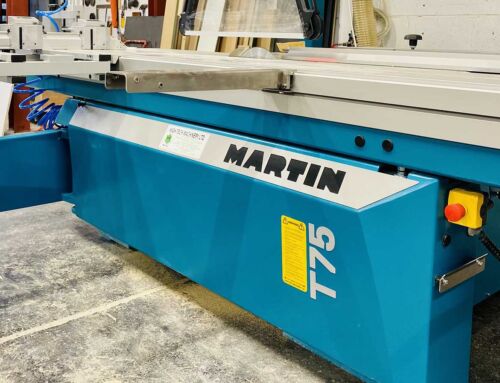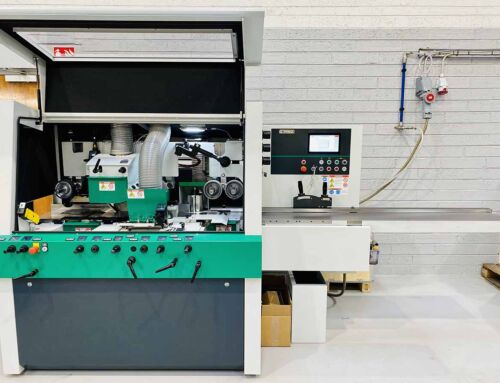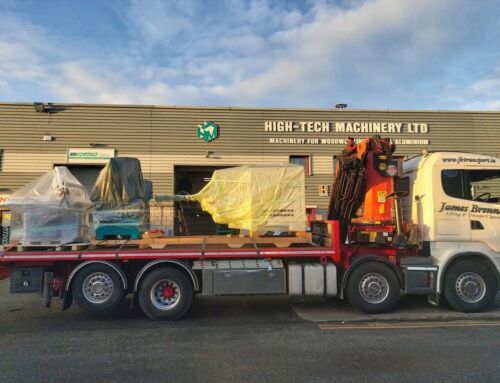Specialist Furniture and Joinery manufacturer, Redwood Design Ltd install a new EMC Explorer sanding machine.
This fully optioned machine is equipped with upgraded power, electronic sectioned pad and touch screen, allowing the customer to change between calibrating, sanding and veneer sanding with the touch of a button.

Sanding Machine options explained:
A sander is a power tool used to smooth surfaces by abrasion with sandpaper. Sanders have a means to attach the sandpaper and a mechanism to move it rapidly contained within a housing with means to hand-hold it or fix it to a workbench. Woodworking sanders are usually powered electrically, and those used in auto-body repair work by compressed air. There are many different types of sanders for different purposes. Multi-purpose power tools and electric drills may have sander attachments.
Woodworking sanders include:
- Belt sander (hand-held or stationary)
- Oscillating spindle sander: A sander mounted on a spindle that both rotates and oscillates in and out or up and down along the axis of the spindle. Good for sanding curves and contours that would be difficult with hand or orbital sanding.
- Straight-line sander: A sander that vibrates in a straight line, instead of in circles. Good for places where hand sanding is tedious or “blocking” is required. Most are air-powered, a few electric.
- Stroke sander: A large production sander that uses a hand-operated platen on a standard sanding belt to apply pressure. For large surfaces such as tabletops, doors, and cabinets.
- Table Top Drum sander: A bench-top sander that uses a rotating drum. Much like a jointer, the operator adjust the height of the grit, by changing the grit of sandpaper, to adjust the depth of cut. Wood is hand fed against the drum to achieve a flat, smooth surface. Can be used for surface sanding, edge sanding, stripping paint, cabinet doors, etc.
- Drum sander: A large sander that uses a rotating sanding drum. As with a planer, the operator adjusts feed rollers to feed the wood into the machine. The sander smooths it and sends it out the other side. Good for finishing large surfaces.
- Wide-belt sander: A large sander similar in concept to a planer, but much larger. Uses a large sanding belt head instead of a planer’s shaping head, and requires air from a separate source to tension the belt. For rough sanding large surfaces or finishing. Used mainly for manufacturing furniture and cabinets.
- Profile Shaper/Sander: An industrial machine consisting of a powered transport with a series of workstations for performing shaping, sanding, or other finish operations on one or more edges of components in cabinetry, furniture, shelving, and other products. These machines create and finish decorative edges in an automated process using rotating ‘shaping heads’, ‘sanding wheels’, ‘foil applicators’ and other specialized equipment.
High-Tech Machinery delivers sanding machine solutions in Dublin and across Ireland.




